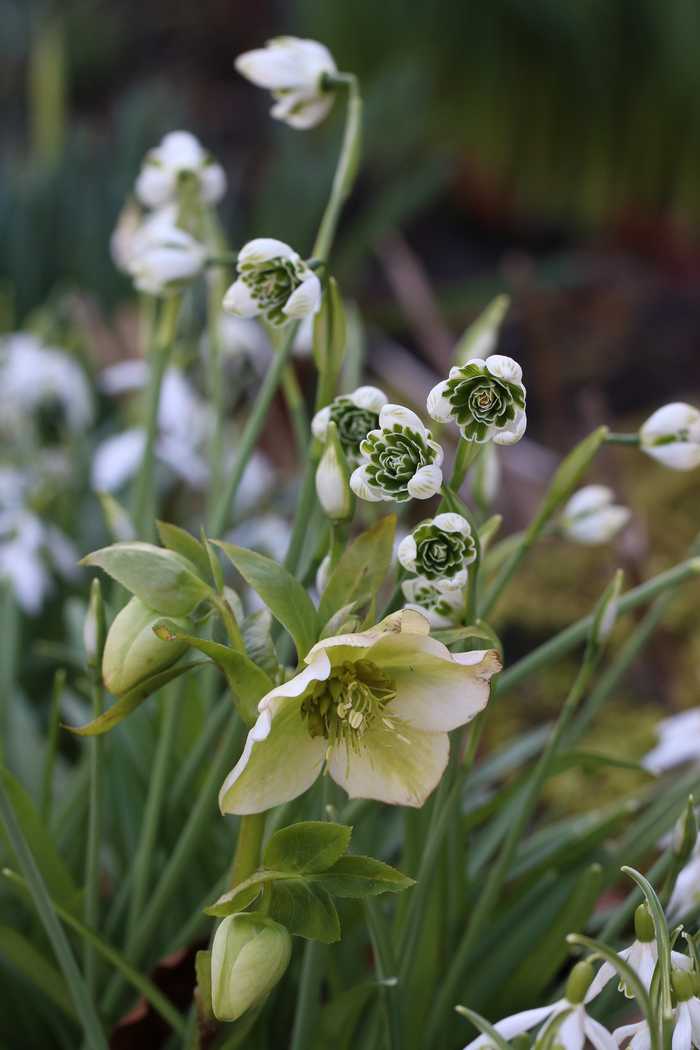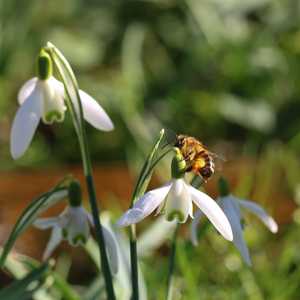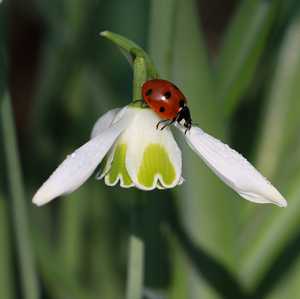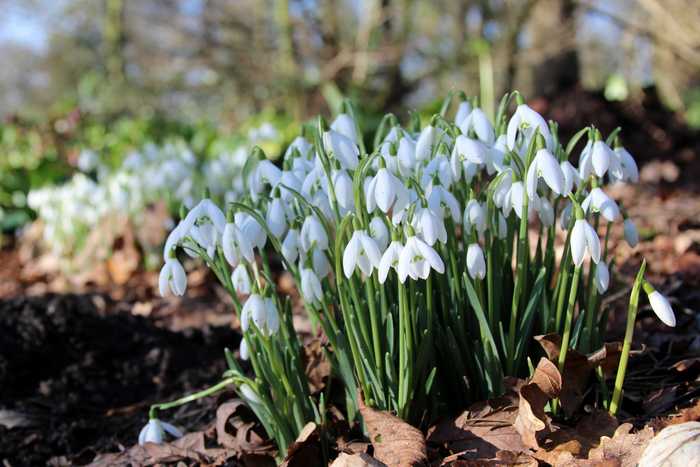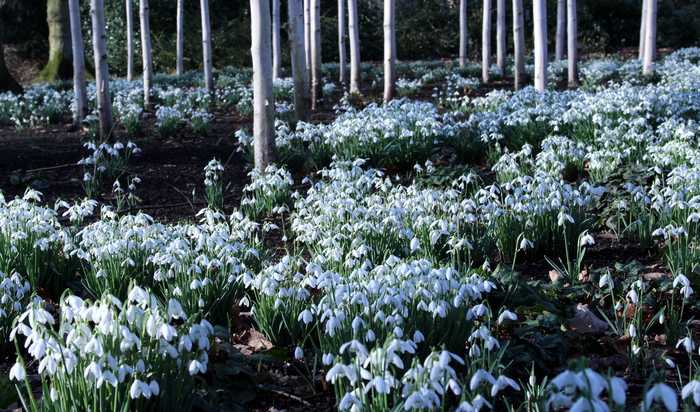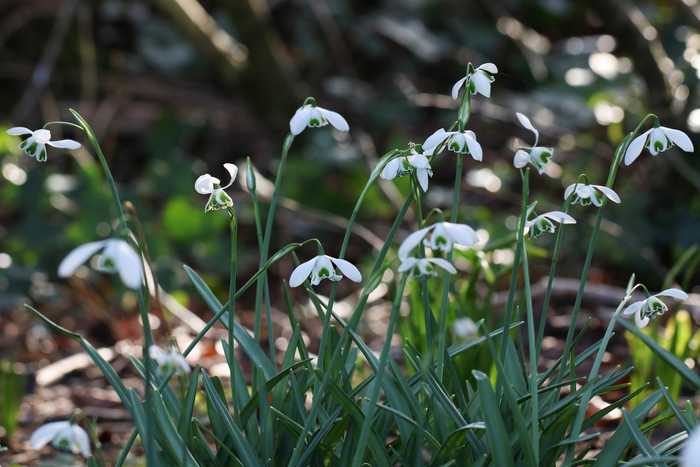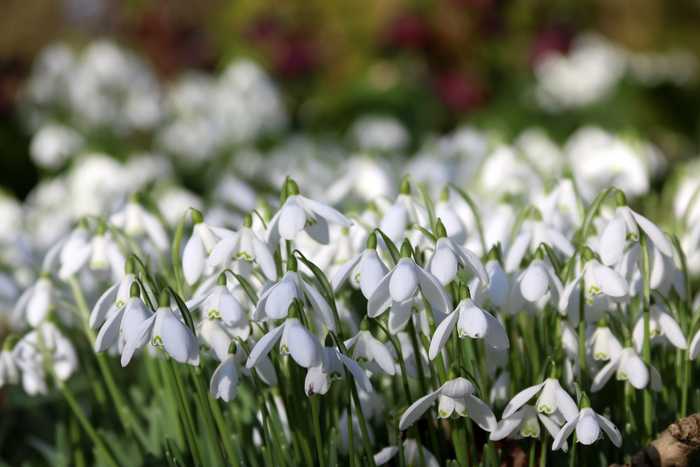Snowdrops! By Alison Moore
I’ve always been a big fan of snowdrops. Perhaps it is because they are associated with February, the month of my birth, or perhaps because they are such a joyous sight after months of grey skies and winter chills. Whatever the reason they herald the end of winter and the prospect of spring on the horizon. Here comes a confession though - I’m not a serious galanthophile! A drift of the common Galanthus nivalis looks just as beautiful to me as a clump of some of the more unusual varieties.
As a photographer, one of the biggest challenges for me is to capture the underside of the flower which is the best way to see the beautiful variations of the inner petals. I love the double varieties and this specimen very obligingly propped ‘itself’ up with aid of a hellebore. I’m guessing that it’s Galanthus nivalis f. pleniflorus ‘Flore Pleno’ but I could be wrong. It’s always useful to see a label but as a keen snowdrop grower recently told me, some unscrupulous types have been known to dig up the rare ones so it’s understandable that gardeners don’t always do this!
It is also wonderful to see wildlife on a snowdrop and the macro lens comes in very useful for shots like these. You can also clearly see that there are two very different varieties of snowdrop here but I’m not even going to attempt to name them.
Since I first started taking photographs of flowers and gardens about four or five years ago, I try to search out new places to visit with my camera at all times of year. So, with apologies to readers of this blog in the south of the country, here are a few of my favourite Cheshire gardens with wonderful snowdrop displays.
Arley Hall and Gardens
Arley doesn’t advertise snowdrop walks as such, but from late January the floor of the Grove and Woodland Walk come alive with hundreds of snowdrops. It’s a truly enchanting place for a wander and the Hamamelis, Daphne and Hellebores all add to the early season colour.
Dunham Massey
The winter garden at Dunham Massey is celebrating it’s 10th birthday this year. One of the most popular National Trust properties in the North West, and the largest winter garden of its kind in the UK, it has a magnificent display of spring bulbs. The snowdrops look particularly striking as underplanting to the beautiful Silver Birch trees - Betula utilis var. jacquemontii ‘Doorenbos’ - in the Birch Triangle.
Rode Hall
The gardens at Rode Hall have been open to the public since 2002 and over seventy different varieties of snowdrop can be seen along the mile-long walk. It’s also famous for its bluebells and that’s another date for the diary.
Weeping Ash Garden
John Bent’s garden in Glazebury, situated next to Bent’s Garden Centre is open every Sunday in February for the NGS charity. Over the last 40 years since the garden was first created, John has planted hundreds of varieties of snowdrops ranging from Galanthus nivalis ‘Lady Elphinstone’ which is a double form with yellow rather than green markings to the large and impressive Galanthus ‘Mrs Thompson’. It’s an amazing collection and I was thrilled that John gave me a little clump of Galanthus ‘Jacquenetta’ for my own garden when I visited on my birthday.
To enjoy snowdrops in your own garden, the best time to plant them is February/March when the flowers have finished but the leaves haven’t started to die down. Commonly referred to as planting ‘In the Green’ this is a much more reliable method of establishing a clump of snowdrops than planting the bulbs in the autumn. They are ideal for naturalising underneath trees or deciduous shrubs where they can be enjoyed in early spring and benefit from surrounding leaf cover for the rest of the year. I grow most of mine around the base of a holly at the bottom of the garden where they will start to ‘disappear’ behind various perennials from mid spring onwards.
It is also possible to grow snowdrops in pots but they will need careful attention and regular watering as well as repotting every year. I’m always tempted to try new plants in pots because I never have enough room to grow everything I want to, but I’m not sure I always have the time for the level of care required. On the other hand, it would make it much easier to capture the underside of the flower with the camera on a more regular basis!
With many thanks to Alison Moore, who also took all the stunning photos
0161 973 1224 or 07412 288929
Blog: www.medium.com/@renaissancegd
Twitter: @renaissancegd
Instagram: @a1isonmoore
Posted on February 17th 2020

